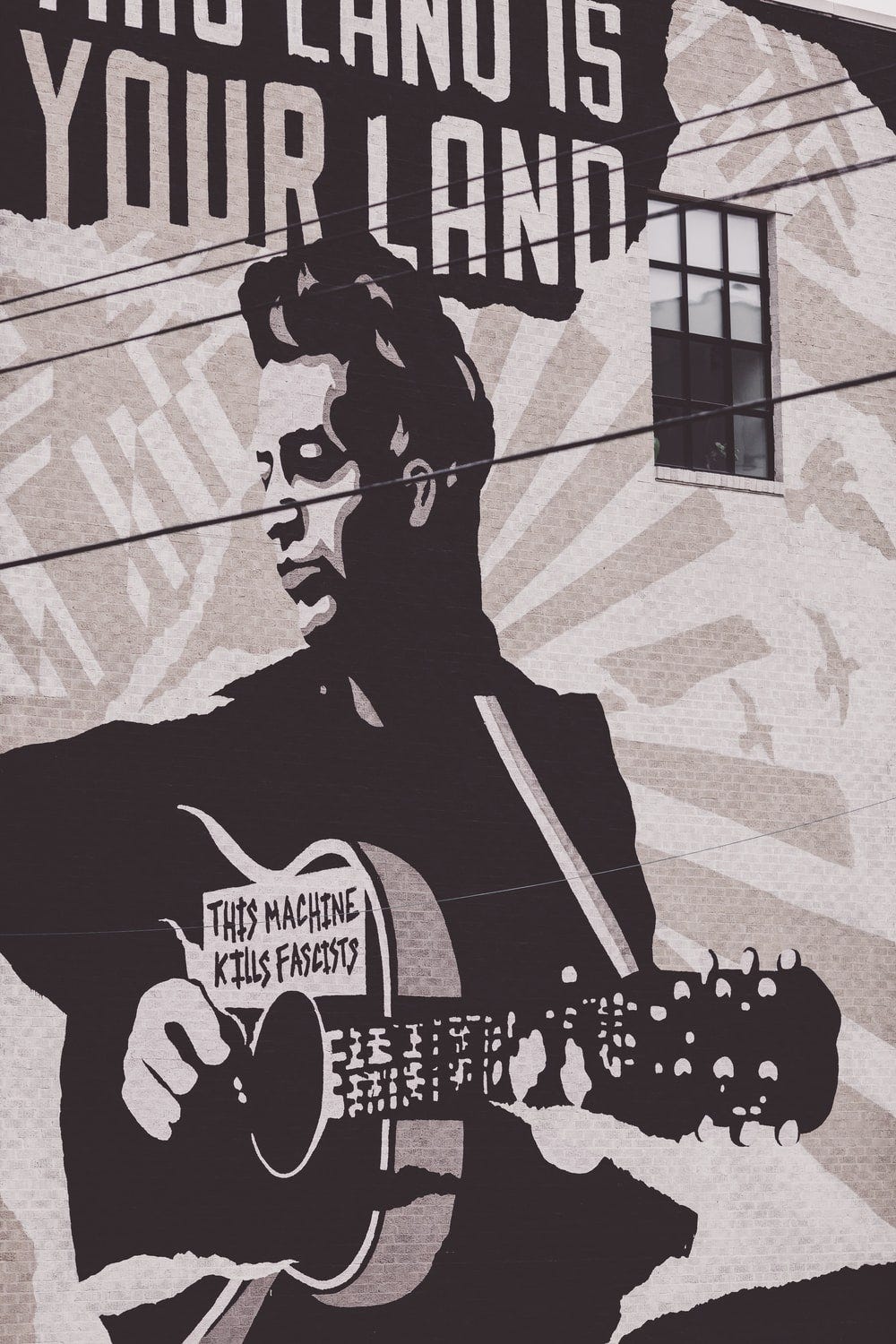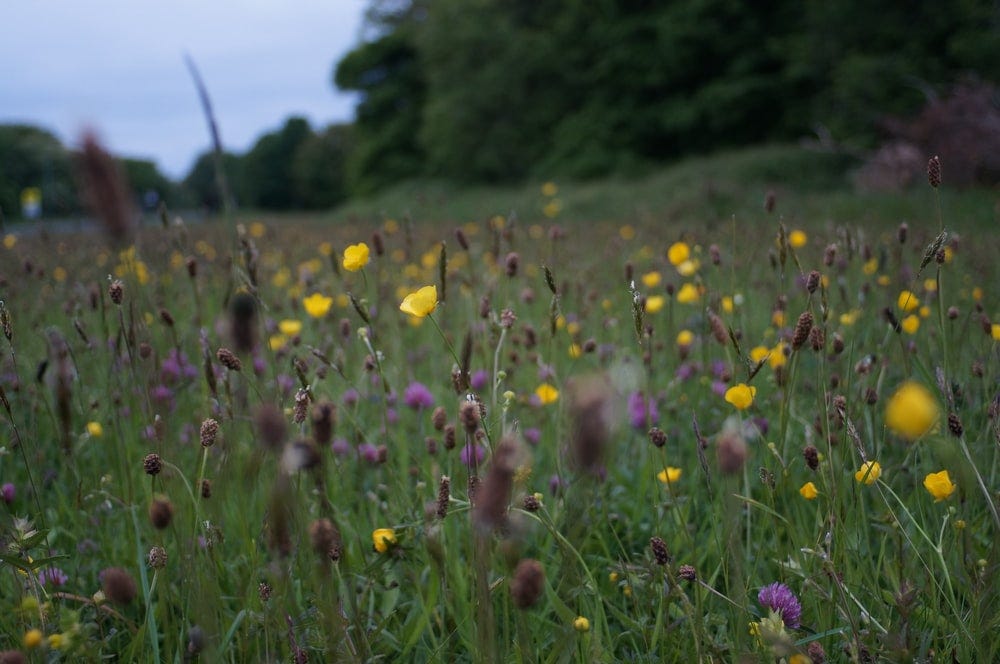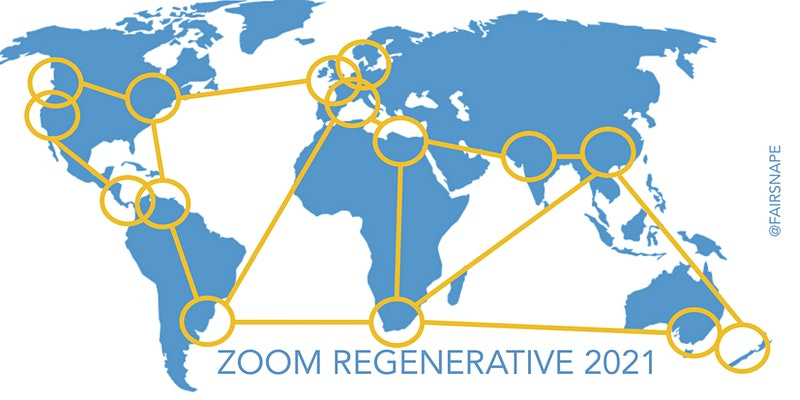Welcome to Regen Notes, a fortnightly newsletter of regenerative news, stories and more with a sideways focus on the built environment, curated by Martin Brown.

Place, Nature, Economy, Education …
Since the last newsletter, the welcomed inauguration of Biden has taken place. And the world, for a while, looking a more positive place, with the USA rejoining the Paris movement and making positive noises on a raft of environmental issues. The poet Amanda Gorman wowed at the inauguration with The hills that we Climb, hinting at the challenges ahead “what is, is not justice”.
J Lopez sang This Land is Our Land the great Woody Gutherie 1940’s song, a strong message on the Public Lands debate in the US maybe, but she did not include verses critical of the USA on hunger and trespass ...
As I went walking I saw a sign there.
And on the sign, it said “No Trespassing.”
But on the other side, it didn’t say anything,
That side was made for you and me.
Such was the potential political impact of these verses, even Guthrie didn’t sing them on original recordings fearing McCarthy investigations. Meanwhile, here in the UK Trespass is again raised as a political issue - to make trespass a criminal rather than civil offence, a move noted as an unnecessary attack on ancient freedoms.
Place features prominently in the Living Building Challenge and (albeit) less so in other standards. The importance of place, of location, and access to nature, has become something we are appreciating more and more during the pandemic lockdowns, creating a real impetus for more engagement with the natural world.
With a sense of Place as our “sixth sense, an internal compass and map made by memory and spatial perception together.” (Rachel Solnit), it is becoming an ever-important health and wellbeing issue, now challenging design of buildings and cities.(Gensler)
This innate desire and need to form a personal identity and a meaningful attachment with place and with landscapes, defined as Topophilia (the love of or emotional connections with place or physical environment) will emerge as a powerful design criteria as we emerge through the pandemic portal.
The Economics of Biodiversity
‘Our economies, livelihoods and wellbeing all depend on our most precious asset: Nature’
‘The world is being put at “extreme risk” by the failure of economics to take account of the rapid depletion of the natural world and needs to find new measures of success to avoid a catastrophic breakdown’, is a sobering conclusion from the behemoth The Economics of Biodiversity: The Dasgupta Review, with ‘radical global changes to production, consumption, finance and education urgently needed’. The report has been likened to the 2006 Stern Report that reshaped economic understanding of the climate crisis.
It is worth recalling the word economics (or oikonomos) comes from Ancient Greece, where Aristotle defined it as the pragmatic science of living virtuously as a member of the polis (or community) through wise household management. The emergence of ecological understanding and the growing influence of indigenous science has taught us that the ultimate household is Earth itself. (Carol Sanford)
On education, the Dasgupta Review calls for an understanding of nature given as prominent a place in education as the “three Rs”, to end people’s distance from nature. This too has resonance with the built environment. If we are to increase the application of nature-based solutions then there is a need at all built environment sector education levels for an understanding of ecology and how nature works.
One country that been long admired for its connectivity with nature, happiness and now carbon is Bhutan, now declared as the only carbon negative country in the world, taking in more greenhouse gases from the atmosphere than it emits. The question is not only how but why it is the only country to do so.
A LinkedIn thread on microplastics raised many interesting and worrying aspects. There is a rising concern on microplastics being found not only in watercourses but found in Antarctic krill on the summit of Everest and now found in human placenta.
With the microplastic sources numerous, - fibres, clothing, textiles, tyres & road surfaces and interior design products - it is an issue that does illustrate our lack of understanding on how we are what we eat, what we wear and what we use in our buildings and how that impacts on eco systems, the environment and our bodies. This a case of Use Less, Demand More (Patagonia’s 2021 push) - demanding more information on where materials come from, how they are used, maintained and repurposed or disposed of. Something the ILFI Declare label addresses exceedingly well for built environment and interior products, Declare Europe has reached a 100 Declare milestone, but needs wider adoption.
Zoom Regenerative
The most recent Zoom Regenerative #25 featured insights from Joanna Watchman (Content Comms Creating Content for a Conscious World, and Work in Mind: Healthy Buildings) on the Creatives Declaration and the importance of saying no when it comes to promoting stories that don’t feel right or are just plain greenwash.
Around 40% of businesses’ online green claims ‘could be misleading’ according to a report in Energy Live However I do think we have in some ways fuelled this situation. We have a very confusing language when it comes to sustainability, climate-carbon, ecology etc (think carbon neutral, carbon positive, net-zero carbon ... ). There is enough confusion here for companies and people to use as a mask and to hide behind, to do nothing different but promote greenwash credentials.
ZR 25 also featured Diana Ilina based in Paris, sharing insights on how Paris is greening in advance of the forthcoming Olympics and (re)creating a Parisian Sense of Place as a 15-minute city
If you are looking to give your sustainability approaches and activities a regenerative lift for 2021? Then why not head over to #ZoomRegenerative for inspirational insights from around the world. You can read about our zoom regenerative journey here, and sign up for our next session, Zoom Regenerative 26 on the 9 Feb. This session features regenerative design in Egypt with Amira Ayoub and an update with Scott Mcaulay at the Anthropocene Architecture School as we prepare for COP26 in November.
I am delighted that Anna Williamson has offered assistance organising ZR events in 2021. As Anna commented at ZR25 “zoom regeneratives they are becoming more and more important, giving an international flavour of what is happening in the built environment globally - the trends, the legislation, the agendas, the solutions - along with introductions to some very bright and very productive individuals”
Zoom Regenerative has been long-listed alongside other inspiring lockdown ideas & initiatives for the 2021 Better Built Environment #ASBPawards







